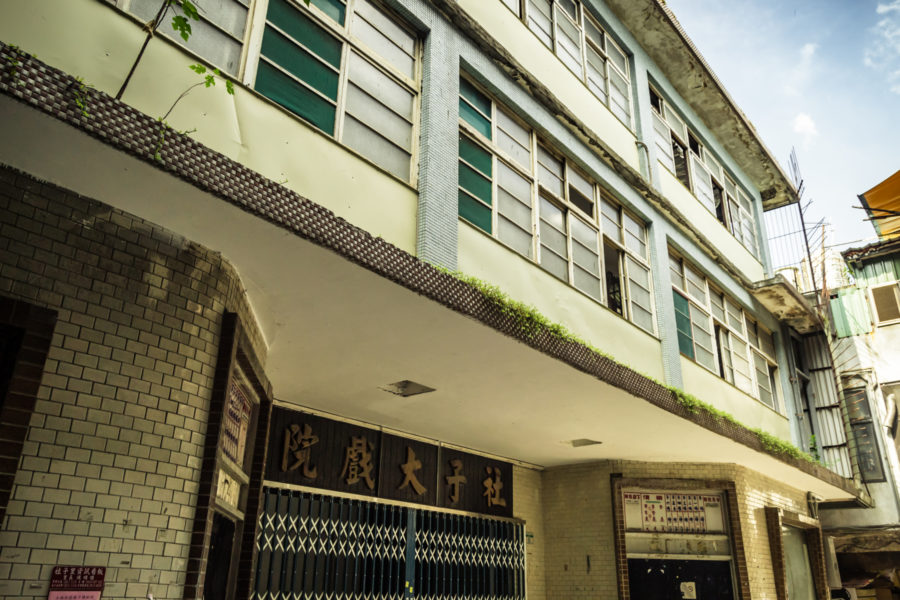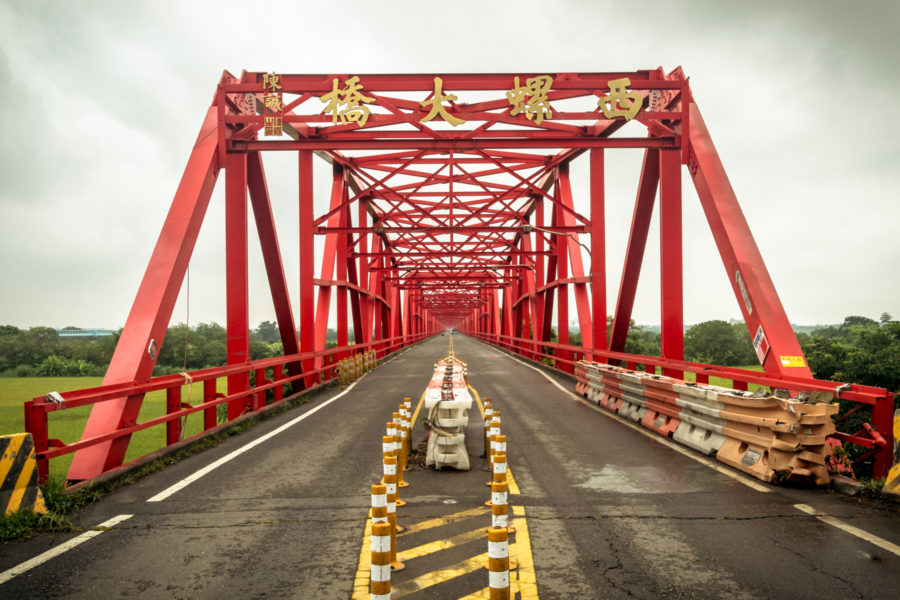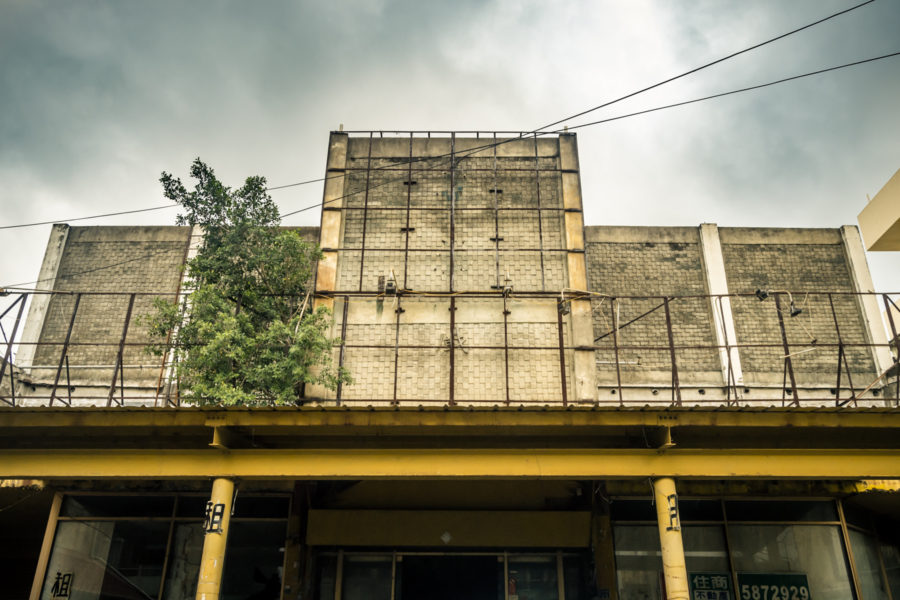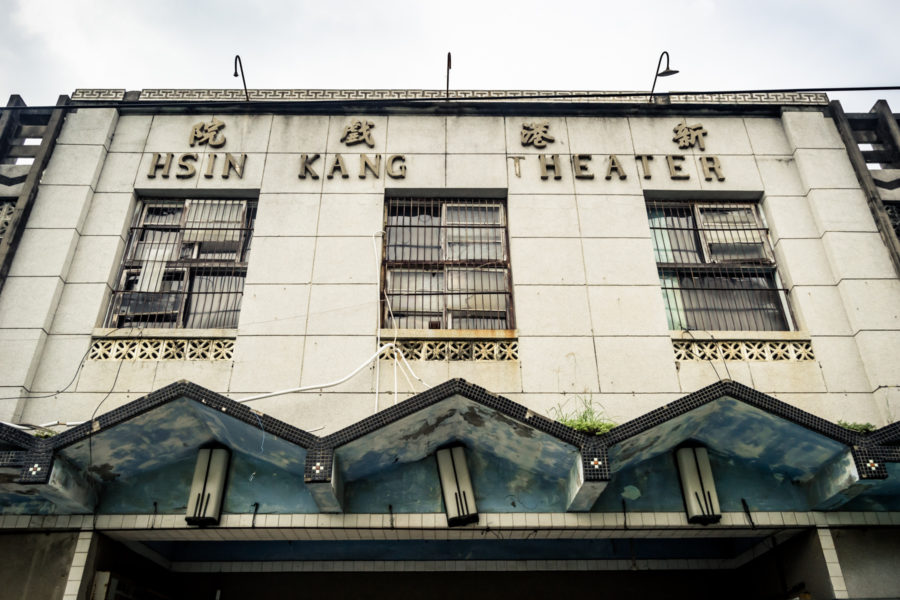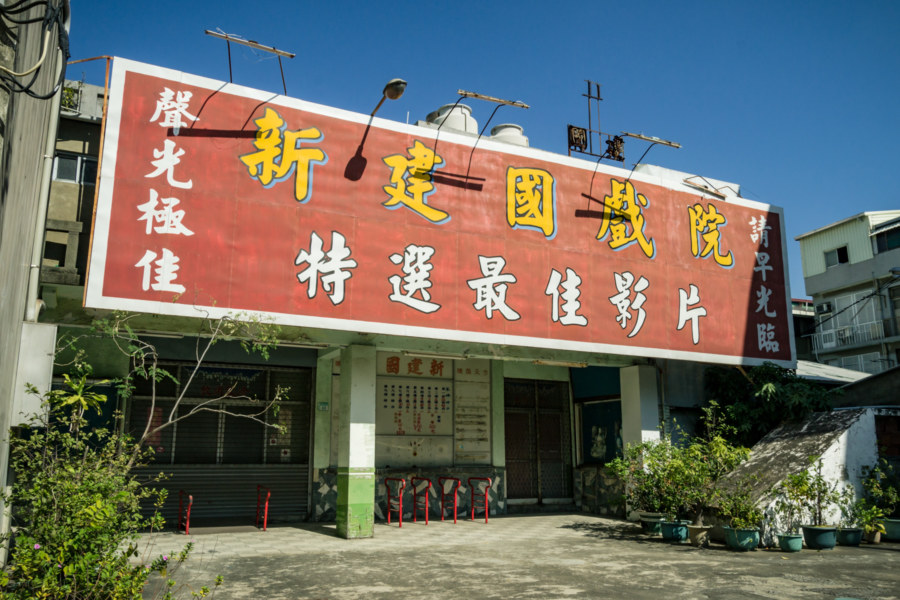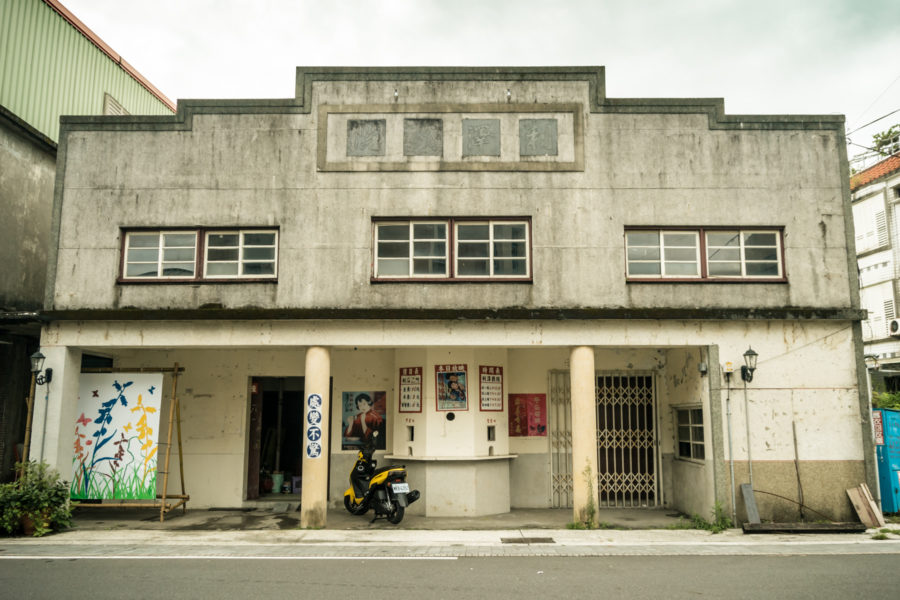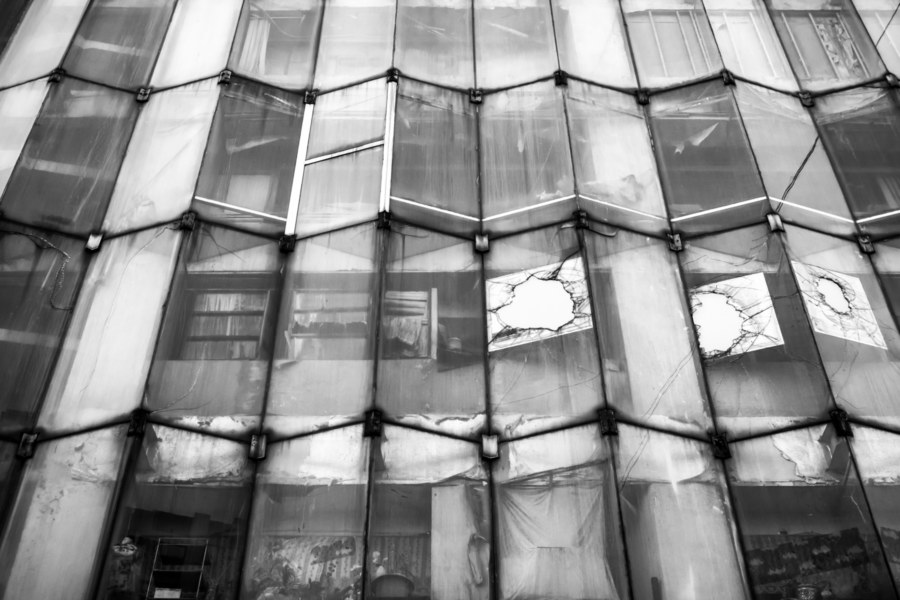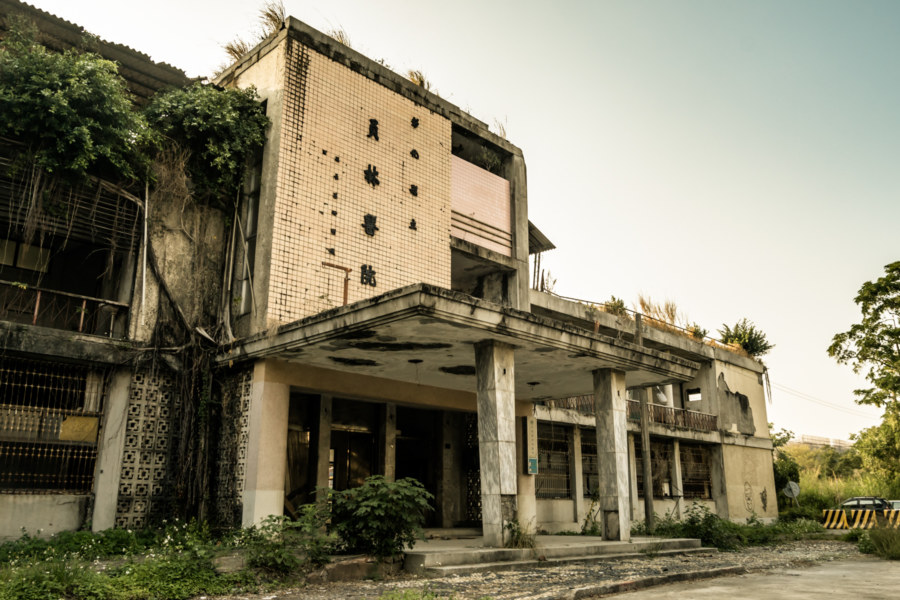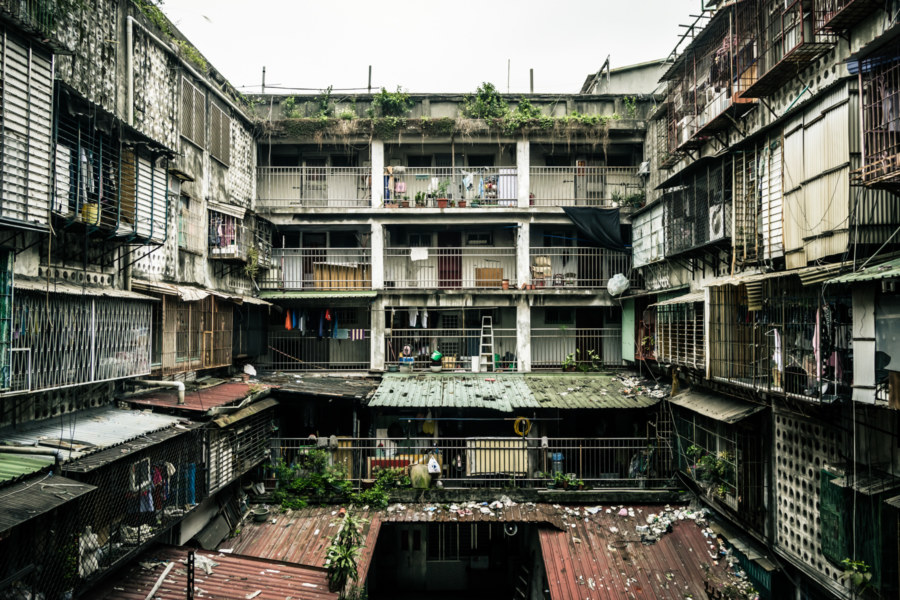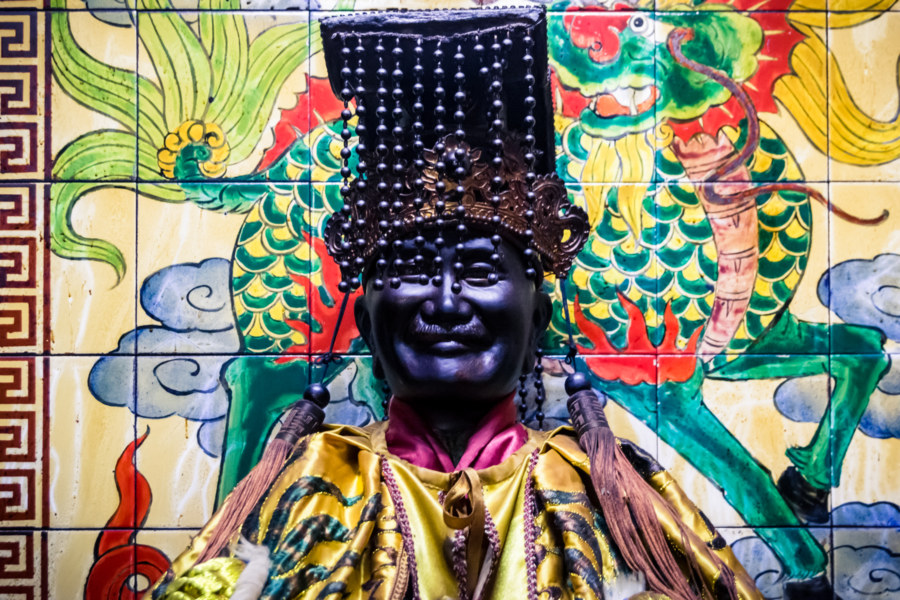Shèzi Theater 社子大戲院 was founded in 1965 as the first open-air theater in Taipei. Located in southwestern Shilin, it was a fairly informal venue from the sounds of it: an empty lot surrounded by bamboo fencing with films projected on a single screen for up to 500 people every night, stars wheeling overhead. Within three years of opening the owners reinvested some of their profits in filling out the space, adding a balcony level and some rudimentary shelter from the elements. Eventually the theater moved into a more permanent building on the same site, perhaps as late as 1976, when it first appears in business records. The rise of home video in the 1980s gravely impacted the theater business, leading the owners to divide the cinema into two halls, but there was no way to survive the new economy. Shezi Theater closed in 1996, another victim of changing consumer habits in Taiwan.
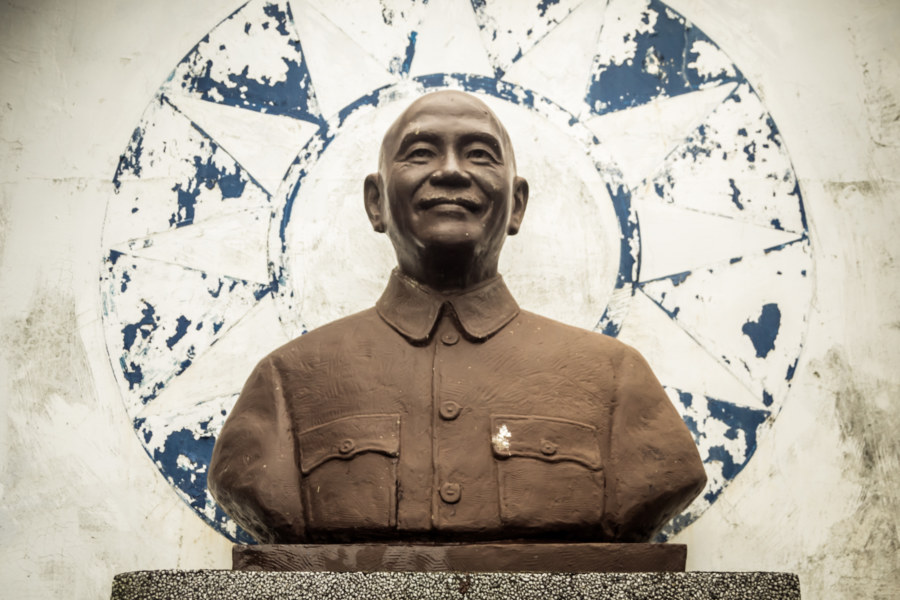
In the aftermath of World War II the Japanese authorities were expelled from Taiwan and the Kuomintang (KMT) invaded from China. Tensions between the local populace and the occupying force boiled over in the bloody February 28 Massacre in 1947, leading to the imposition of martial law and the beginning of the White Terror (白色恐怖) in 1949. For the purposes of this blog the time period from the end of the Japanese colonial era until the lifting of martial law in 1987 and its ultimate end in 1991 shall be referred to as the KMT authoritarian era.
Xiluo Bridge 西螺大橋
Xiluo Bridge (西螺大橋) spans the mighty Zhuóshuǐ River (濁水溪), the unofficial boundary between north and south Taiwan, connecting the counties of Changhua and Yunlin. Construction began in 1937 under Japanese colonial rule but came to a halt after the attack on Pearl Harbor as the allotted steel was needed for the war effort. In 1952 the bridge was completed under the incoming Chinese Nationalist government with American steel and financial aid. At 1,939 meters in length it was one of the longest bridges in the world when it was finished—second only to the Golden Gate Bridge at that time—and became such a source of national pride that it appeared on Taiwanese bank notes (specifically 第一套橫式新臺幣) and stamps in the 1960s. Originally it was equipped with sugar railway tracks but these have been removed and nowadays only light road traffic is permitted to cross the bridge.
Xiluo Huasheng Theater 西螺華聲戲院
Xiluo is justifiably famous for Xiluo Theater, the Japanese colonial era theater located close to the architectural wonders of Yánpíng Old Street 延平老街, but this small town on the south bank of the sluggish Zhuóshuǐ River 濁水溪 was once home to two additional theaters. Almost no mention of these other theaters can be found except in this news report about a local painter—but while browsing around satellite view on Google Maps I managed to locate Huáshēng Theater 華聲戲院 (also known as Yīshēng Theater 一生戲院).
Hsin Kang Theater 新港戲院
Hsin Kang Theater 新港戲院 is located in the small town of Xingang, Chiayi, not far from the famous Fèngtiān Temple 奉天宮. Multiple sources agree it went out of business in 1988—a victim of shifting consumer preferences and demographic changes in small town Taiwan—but the actual age of the building is somewhat uncertain. This academic reference suggests it was founded in 1929, in the midst of the Japanese colonial era, but the theater was almost certainly renovated or completely rebuilt in the post-war period.
Tainan Xinjianguo Theater 台南新建國戲院
One of the last of the many vintage theaters of Tainan seems to have finally closed its doors. Founded in 1964, the notorious Xīnjiànguó Theater 新建國戲院 was originally named for its location on Jianguo Road 建國路, which was later renamed Mínquán Road 民權路. It is not uncommon for old theaters in Taiwan to resort to showing pornography in the twilight of their decline but this particular theater appears to have specialized in more carnal forms of entertainment for much of its history. Perhaps this is why this theater remained in business until very recently—long after most of the nation’s hundreds of other standalone theaters shut down in the late 1990s and early 2000s.
Lize Theater 利澤戲院
The obscure Lìzé Theater 利澤戲院 is located in the village of Lìzéjiǎn 利澤簡 in Wujie, a rural township just east of Luodong in Yilan, Taiwan. Built in 1964, it once served as a cinema and playhouse, hosting a variety of films and live theater performances for the local populace before slipping into decline in the 1980s, a little earlier than most other theaters I’ve visited around the nation. Afterwards the theater was converted for use as a clothing factory but this also went out of business. Nowadays the building is more disused than abandoned, as descendants of the original owner are still making use of the structure for storage and other purposes. In a stroke of good luck I happened to visit while the door was open—and after communicating my interest in the history of old theaters in Taiwan I was invited in for a brief chat and look around. Each theater has its own story to tell—but in this case I was particularly interested in learning why a theater was built in such a small and seemingly unimportant village.
Zhongwai Department Store 中外百貨
Today I went to investigate reports of an abandoned building on the edge of Xīméndīng (西門町), a busy commercial district in central Taipei. It is fairly well-known due to its central location but I could find no easy means of entry for the very same reasons. From this television news report it sounds as if this was originally the Zhōngwài Department Store Company (中外百貨公司) and later the Yángyáng Department Store (洋洋百貨). While it isn’t surprising to find such ruins around much of Taiwan it is somewhat unusual to see in such a prosperous area. The building is for rent, as I understand it, and much of the aforementioned report seems concerned with the outrageous price tag for such a decaying monstrosity.
Yuanlin Hospital 員林醫院
Despite having spent a lot of time in Yuanlin, a mid-sized city in central Changhua, Taiwan, I have only recently begun to explore some of its more famous ruins. Among these is Yuanlin Hospital 員林醫院, formally the Changhua County Yuanlin Hospital 彰化縣立員林醫院, originally built in 1963 and operational until the the turn of the millennium. Nowadays it is one of the more notorious abandoned places in central Taiwan, where it is regularly featured in news reports, particularly around Ghost Month 鬼月. Taiwanese media engage in an annual outpouring of overly sensationalized stories about haunted places—and hospitals, as liminal spaces of birth and death, often appear in such reports, complicating research into the real story of what went on.
Inside the Decaying Courtyard
The view from within a decaying public housing block in downtown Taipei.
Yesterday I followed a lead to Lánzhōu Public Housing (蘭州國宅), a KMT authoritarian era project in central Datong, Taipei. It is similar to Nanjichang Community (南機場社區), a far more well-known housing project in Wanhua, but this building was constructed almost ten years later in 1973. As with Nanjichang, its fate also remains unclear, as the city is working through complex land ownership issues to figure out how to move residents into more modern housing. I plan to have a full write-up about this place some day so I’ll leave it at that for now—just a glimpse.…
Tamsui Kuixing Temple 淡水魁星宮
Kuíxīng Temple 魁星宮 in Tamsui is nominally dedicated to the eponymous Kuíxīng 魁星, god of examinations and one of the Five Wénchāng 五文昌, a group of deities representative of classical Chinese culture. He typically takes the form of a man balanced on one foot with a writing brush in one hand, his body twisted in a pose suggestive of the strokes of Chinese calligraphy. But you didn’t come here to read about Kuixing—this temple is notable for being one of only a handful of sites in Taiwan venerating Chiang Kai-shek 蔣中正, president of the Republic of China until his death in 1975, as a god. For a time it was informally known as the Tamsui CKS Temple 淡水蔣中正廟.
